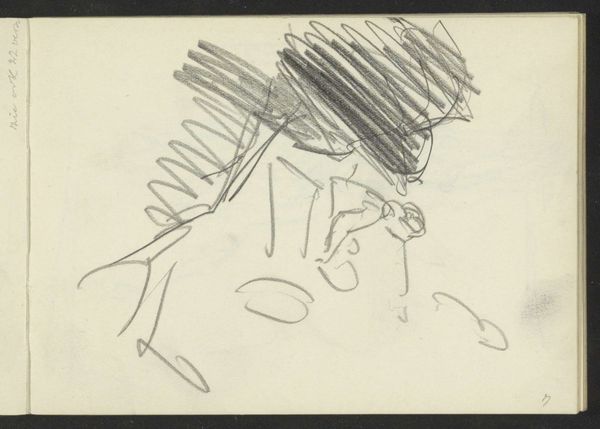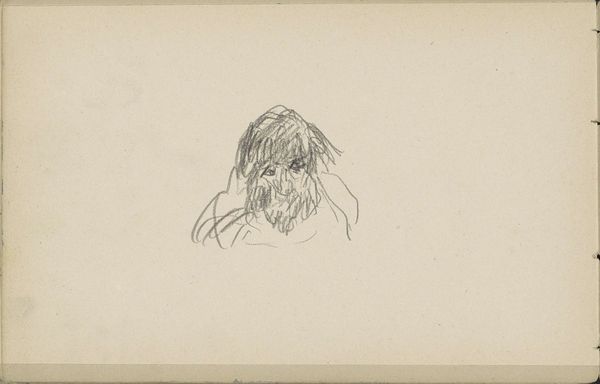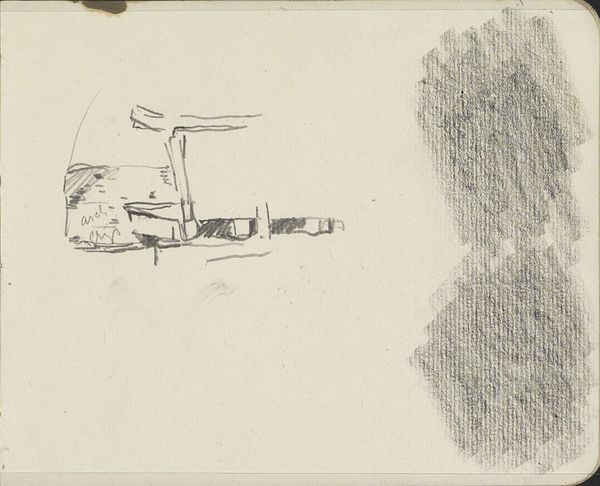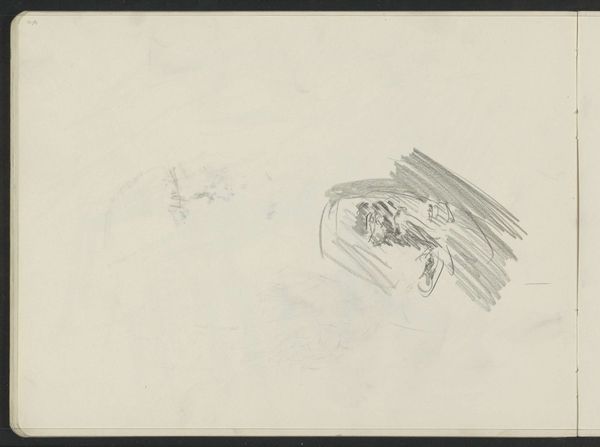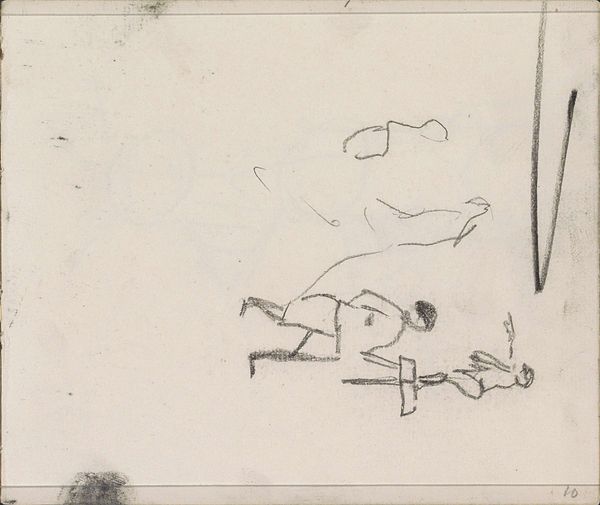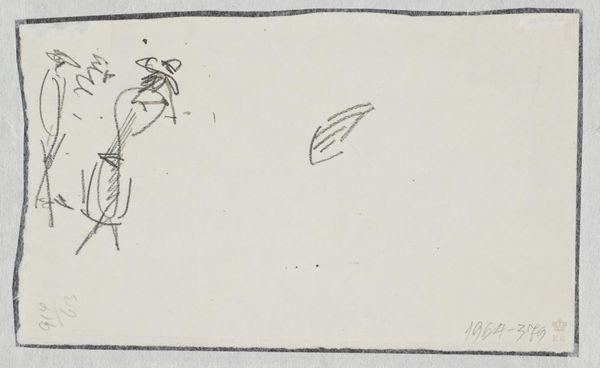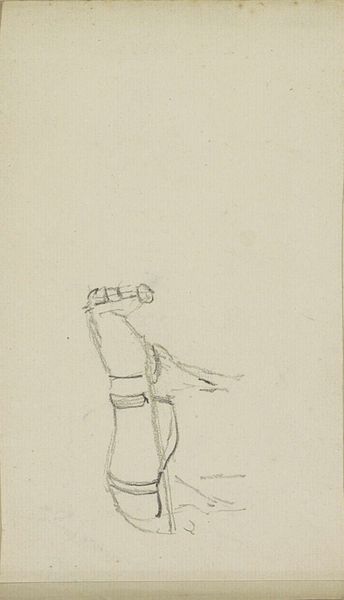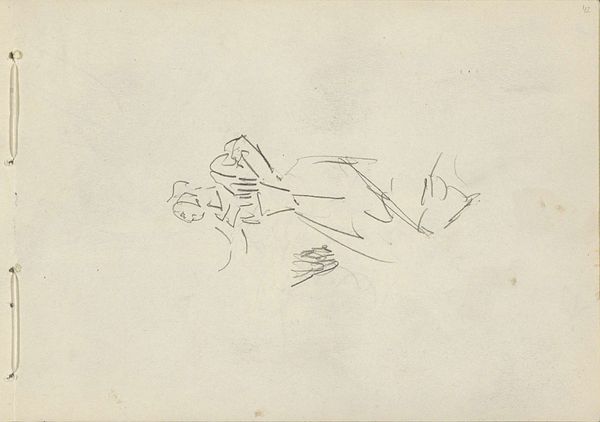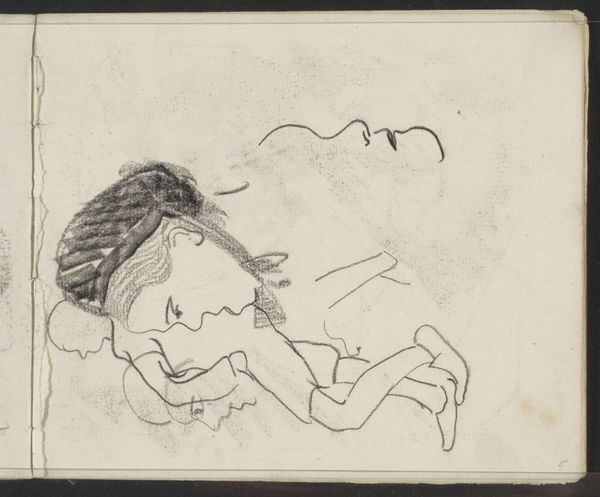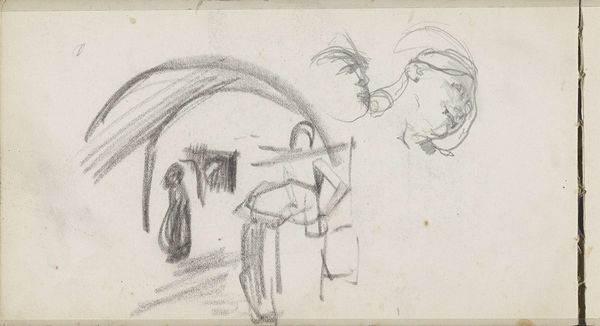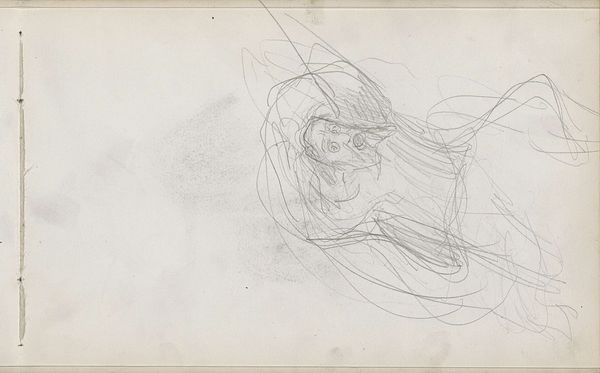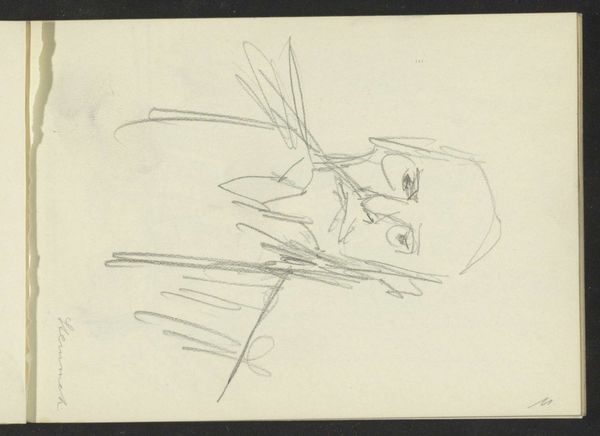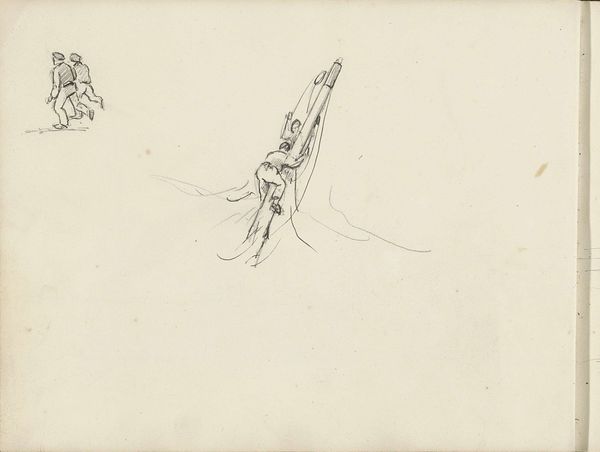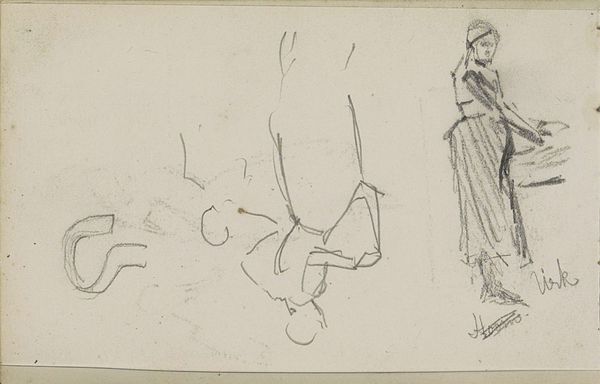
drawing, pencil
#
portrait
#
drawing
#
pencil sketch
#
figuration
#
pencil
#
line
Copyright: Rijks Museum: Open Domain
Editor: Here we have Julie de Graag's pencil drawing, "Head of a Girl with Long Hair in a Bow," from around 1894. The sketch is light, airy almost, but the girl's expression feels… serious, even a little sad. What can you tell us about this seemingly simple portrait? Curator: It's precisely this contrast between the lightness of the medium and the perceived gravity of the subject that I find so compelling. Drawings like this give us insight into the training and the artistic processes during this period. What do you notice about its composition, its positioning within the full sheet? Editor: Well, there's quite a bit of empty space. It looks almost like a study, not necessarily intended as a finished work in itself. There's even what looks like a quick sketch of a hand beside her, off to the side. Curator: Exactly. We have to remember that institutions and academies strongly directed what and how artists should practice. Academic training during the late 19th century heavily emphasized mastering the human form through drawing. The empty space draws our attention to the practice, placing focus on technique. What’s striking here, and it may inform her subject's expression, is that it defies traditional, idealized portrayals of women that were so dominant. What do you make of that, that absence of idealization? Editor: That’s a great point. Instead of the typical glamorous or romantic depictions, it's more… realistic. Perhaps that was De Graag's subtle way of challenging expectations? Curator: Perhaps, or at the very least observing the world around her more directly. These works weren't always publicly exhibited but served to sharpen skill sets that enabled female artists' later acceptance into a professionalized and masculinized field. Do you see other challenges within the depiction itself? Editor: Yes. The work remains in sketch form only, almost as if incomplete, with significant use of white space. Curator: A good point to end with, showing a practice, skill, and technique that has empowered De Graag. Thank you! Editor: Thank you, it gives one much to reflect on.
Comments
No comments
Be the first to comment and join the conversation on the ultimate creative platform.
